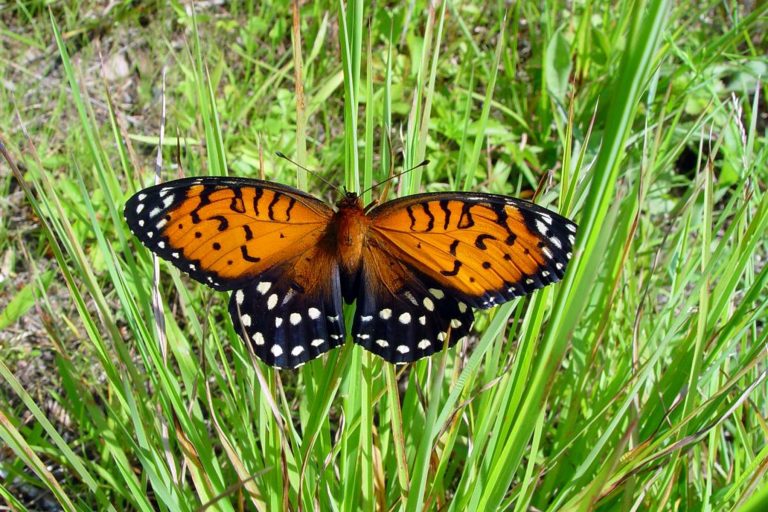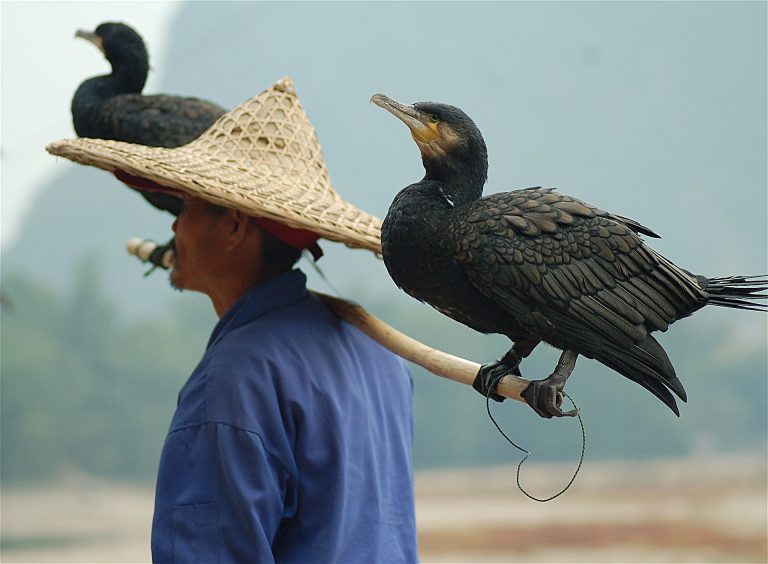Insects are the world’s largest animal group. It is believed that there are 10 quintillion of them on Earth. Scientists have revealed startling evidence over recent years that the number of insects is declining. Many previous reports about the worldwide decrease of insects suggest that we may have severely underestimated their vulnerability.
In November 2019, the Entomological Society of America held a conference in St. Louis, Missouri, to discuss the worldwide status of insects. According to reports submitted to the National Academy of Sciences (NAS), PNS, notable risks to insects include habitat loss, imported species displacement, chemical pollution (e.g. pesticides), overharvesting, and even light pollution.
Multiple studies have shown that, in addition to the loss of rare species, there has been a significant decrease in the abundance of insects that were formerly widespread.
Regal fritillary (Speyeria idalia), for instance, a striking species of prairie butterflies, and the rusty patched bumblebee (Bombus affinis) are species that once thrived in the vanishing grasslands and tallgrass prairies of the United States. Puritan tiger beetle (Cicindela puritana), a voracious predator of other insects found only along select waterways of the Eastern U.S., is highly susceptible to habitat loss or degradation. Each of these endangered insects is from a wider lineage that contains several IUCN “red list” species (i.e., globally extinct, endangered, and threatened species.)

David Wagner, an entomologist at the University of Connecticut, in charge of organizing the Entomological Society of America symposium, at which the findings were first presented to the NAS, got to the point, saying, “insects are suffering from death by a thousand cuts.” Without insects, the ecology collapses into chaos.
Success
You are now signed up for our newsletter
Success
Check your email to complete sign up
Insects make up a large portion of the animal biomass that links primary producers to consumers in both freshwater and terrestrial food webs. As insects are at the bottom of the food chain, if they are destroyed, naturally many birds, bats, spiders, and other predators would follow. Insects also serve to aerate soils, pollinate plants, and remove manure and cadavers; if they were to vanish, entire landscapes would be reshaped.
Is it true that insects are vanishing at an alarming rate? Is it more complex than imminent global collapse? Wagner confirmed “yes,” on both accounts. The necessity to prioritize the conservation of insects cannot be overstated.
When scientist Paul Ehlrich proposed the Rivet Popper theory, he was attempting to explain the significance of important species in an ecosystem. An aircraft is compared to an ecosystem in this theory, with rivets corresponding to the species that are responsible for connecting the various components of the airplane/environment together. If passengers begin to remove the rivets, it can keep going for a while, but eventually the aircraft will be unable to sustain its flying altitude.
So, while exploitation and extinction of important species will not immediately damage the ecosystem, it will ultimately bring its collapse.

Varroa mites on the body of a honeybee. (Image: courtesy of Eric Erbe, Christopher Pooley: USDA, ARS, EMU via Wikimedia Commons public domain)
The decline of the domesticated honey bee in the United States has been linked to (introduced) mites, viral infections, microsporidian parasites, poisoning by neonicotinoid and other pesticides, habitat loss, overuse of artificial foods to preserve hives, and inbreeding. However, after 14+ years of research, uncertainty remains which of these, a combination thereof, or as yet unidentified elements are most harmful to the health of bees.
Many of Europe’s butterfly declines appear to be linked to modern agricultural practices. Family farms merged into larger commercial operations, mechanized equipment sped up agricultural industrialization, insecticides became widely available, and synthetic fertilizers were manufactured and applied in large quantities.
Since the 1990s, agriculture technology has evolved significantly, further marginalizing the small-scale farmer, and disregarding nature. Deforestation, mostly for agricultural development, is increasing at alarming rates, with the consequences for insects and other arthropods largely unknown.

Pesticide spraying is linked with the depopulation of many insect species, as the poison rarely kills only the target pest. (Image: Scot Nelson via Flickr CCO 1.0)
The good thing is that not all insects are declining at the same rate. Some of them are even thriving. As an example, Matt Forister, an entomologist studying butterflies in the Western U.S, and co-author to the NAS reports, points to two species representing very different situations.
The Gulf Fritillary, (Agraulis vanillae) or passion butterfly, a bright orange butterfly of the family Nymphalidae typically found in southern parts of the United States, Mexico, and Central America, is flourishing in California, thanks to the cultivation of its host plant, the passion vine, (Passiflora spp), a popular decorative plant.
Once thought to be extinct, the Island Marble butterfly (Euchloe ausonides insulanus) was recently rediscovered on San Juan Island in Washington State. Habitat loss is blamed for its drastic decline, and the butterfly is currently listed as critically imperiled.
Meanwhile, noticeably increased populations of freshwater insects may be due to clean water legislation implemented across Europe and North America.
Support for insects gaining interest
In 2019 Germany pledged $118,500,000 to insect conservation, monitoring, and research. Costa Rica approved foreign groups investing $100 million to catalog and sequence DNA of “every multicellular creature in the country over a decade, “which will be particularly important for the countless unknown tropical insects,’’ Wagner wrote in the report’s introductory paper.
Citizen scientists are also expanding the information base. iNaturalist, an app where users may submit insect pictures for identification and classification, is rapidly growing in popularity.
Wagner and Forister suggest that individuals can help insects in their own backyards, neighborhoods, and communities. The promising factor is that insects reproduce quickly, so if you restore their habitat, they will soon recover.
Few people appreciate how incredible these tiny instruments of nature are until they see them in action. Aside from being necessary to human survival, they are also beautiful, intelligent, fascinating, mysterious, and simply invaluable.













